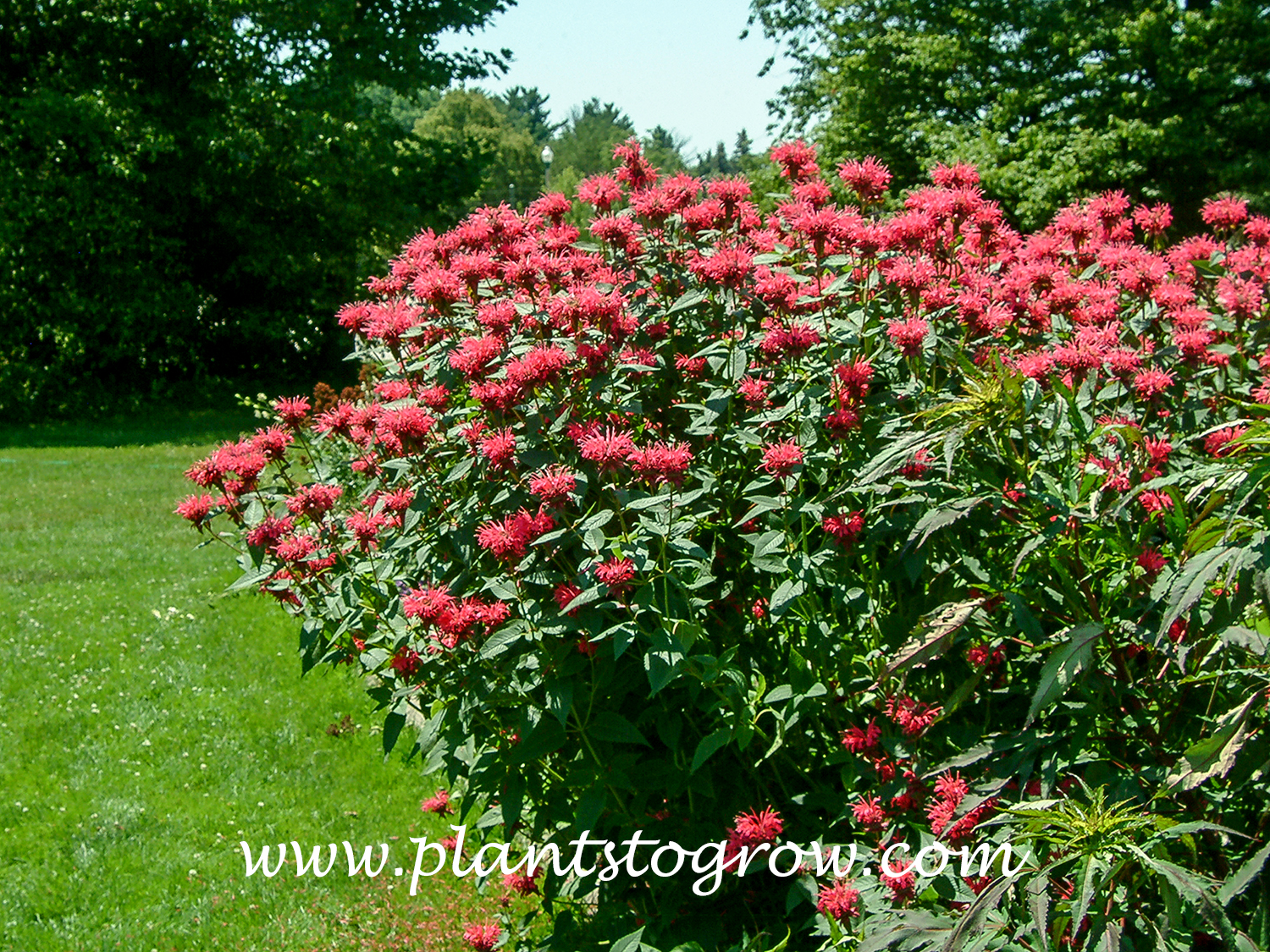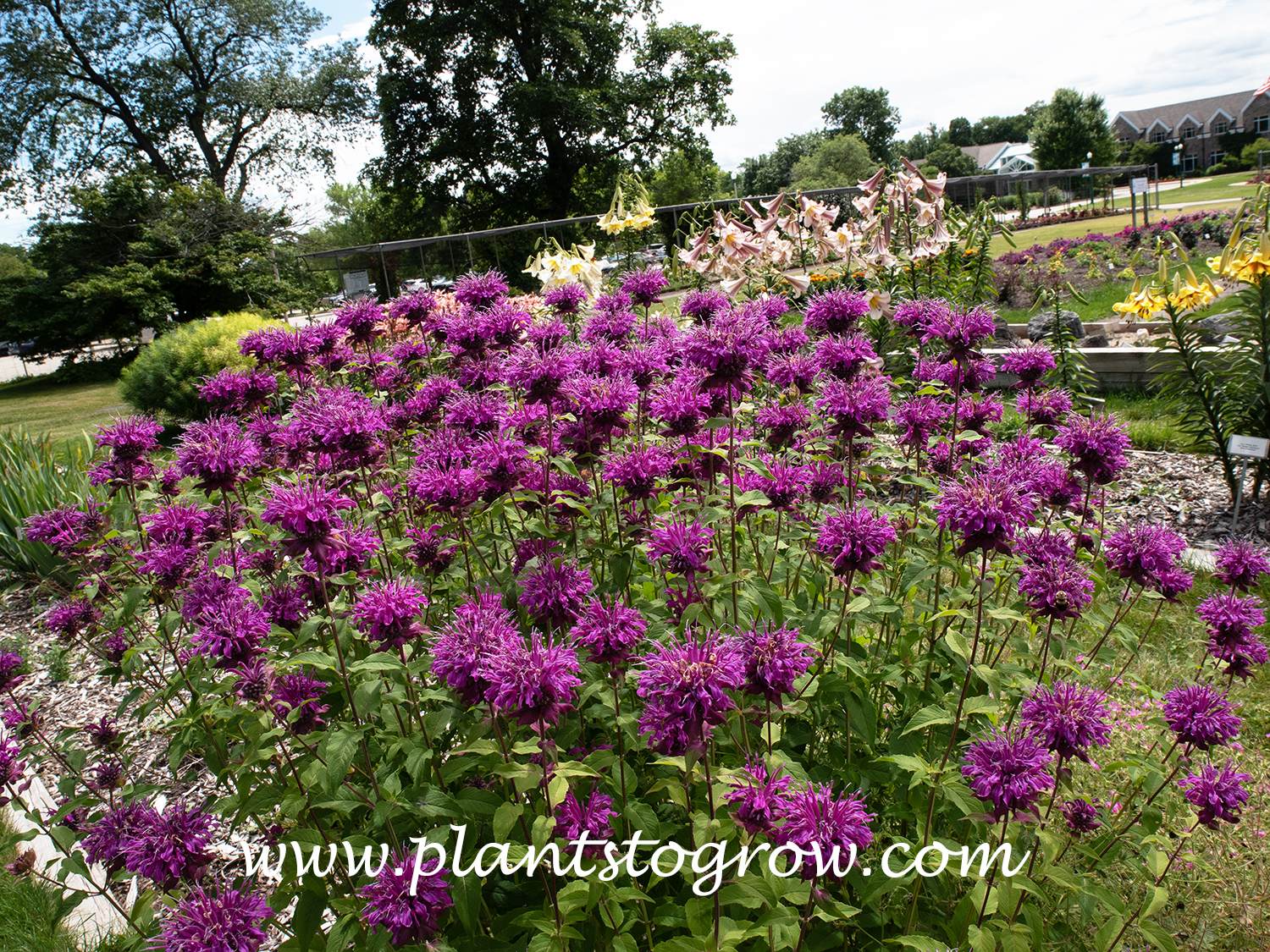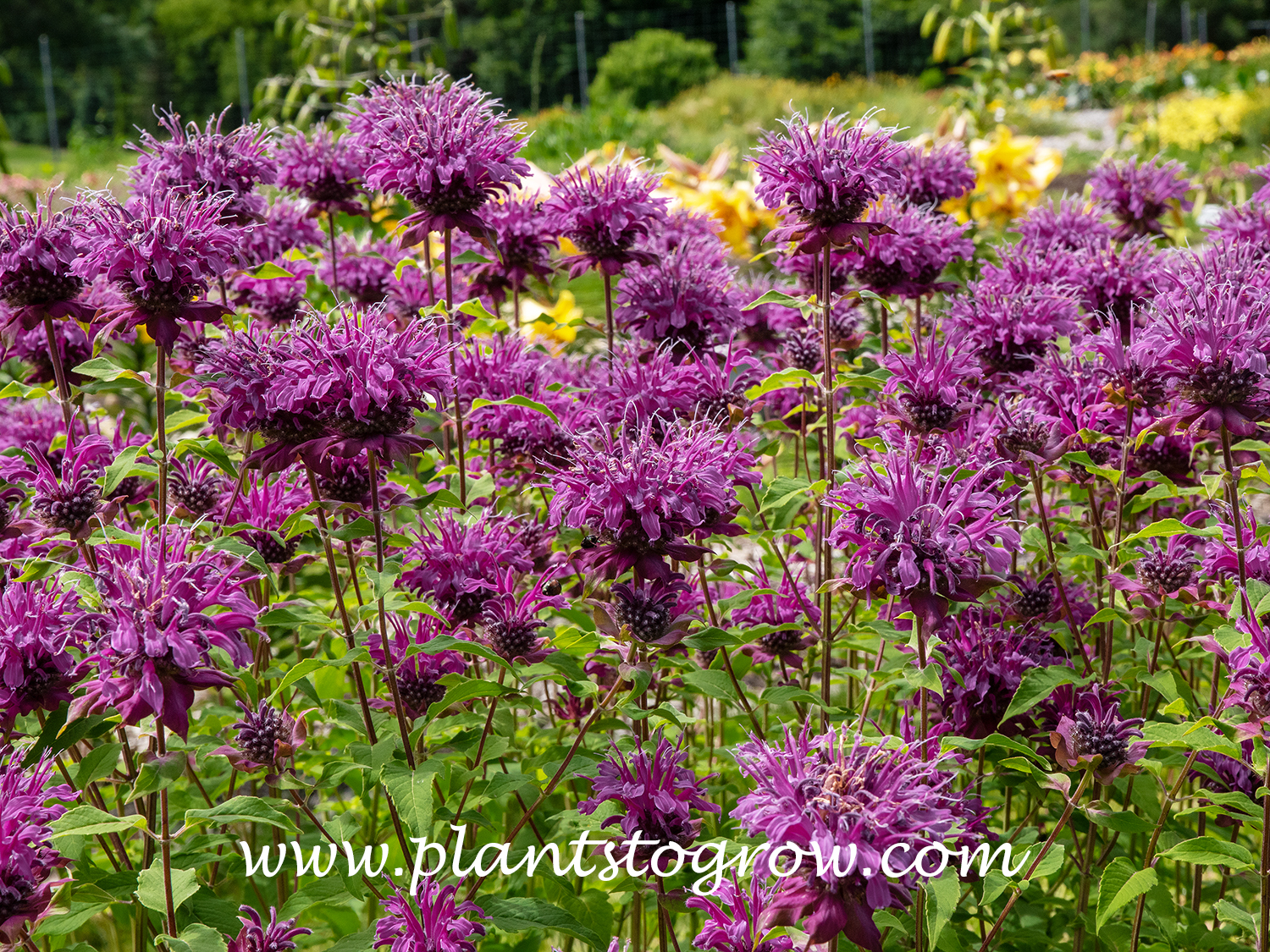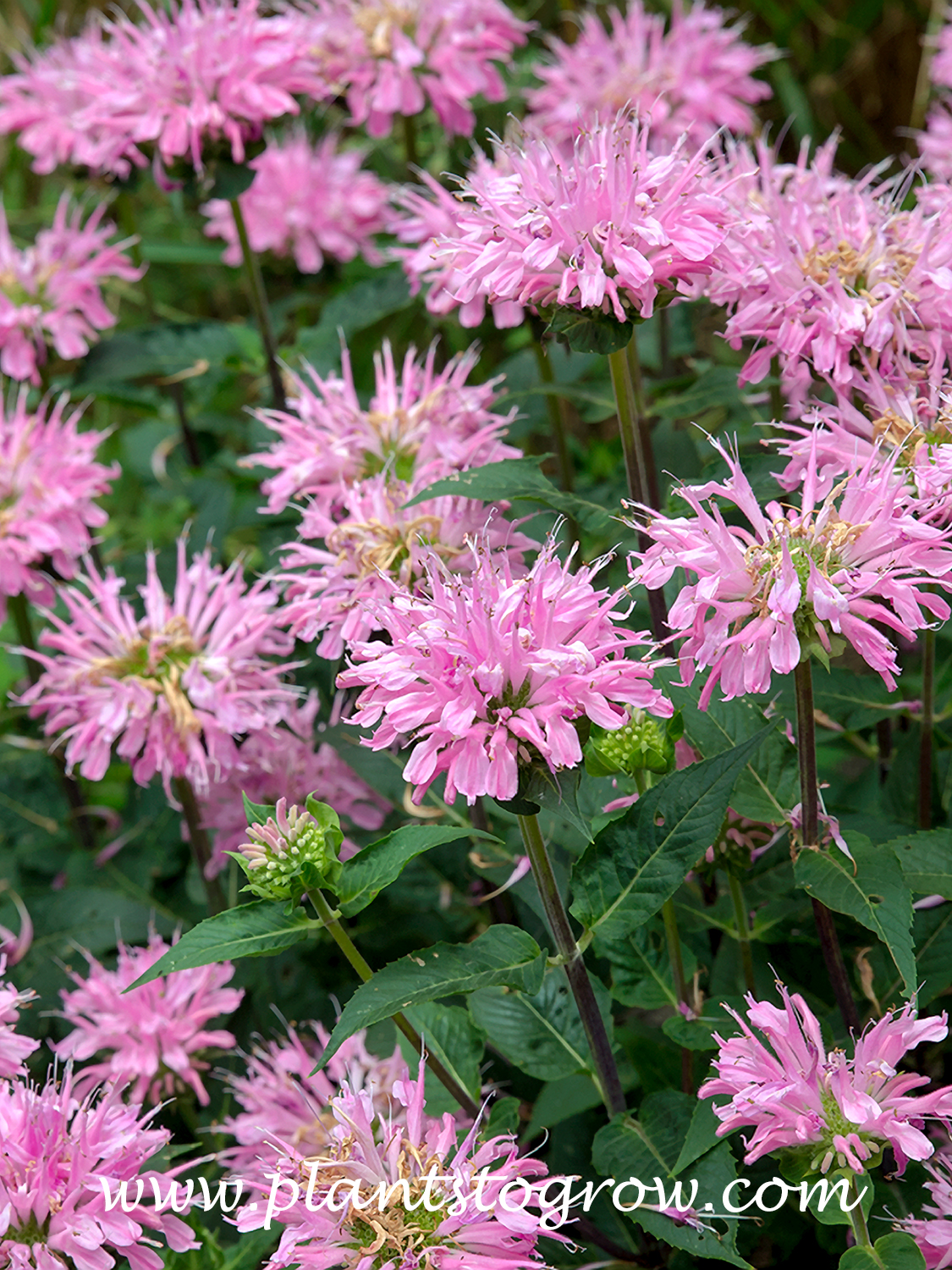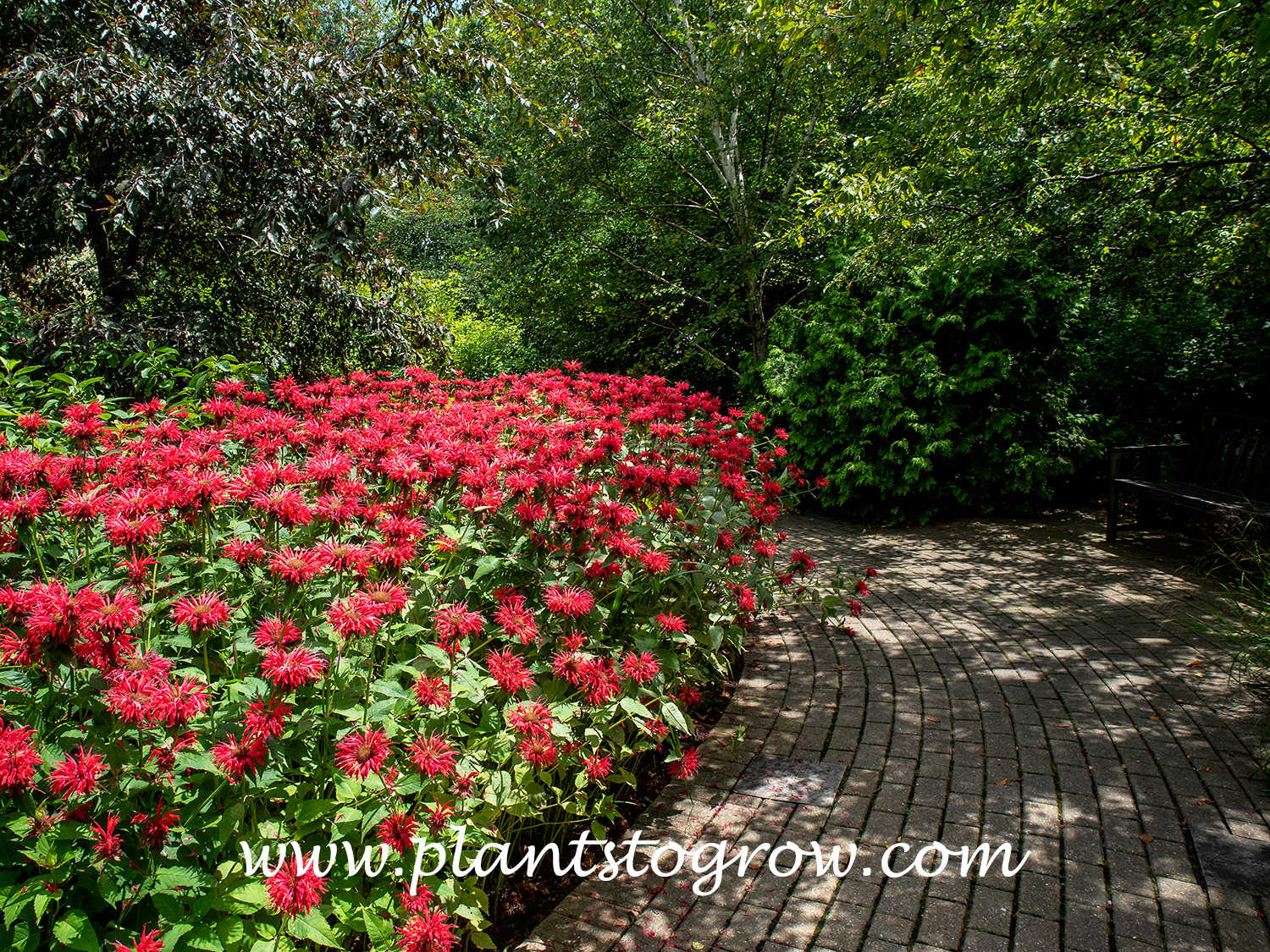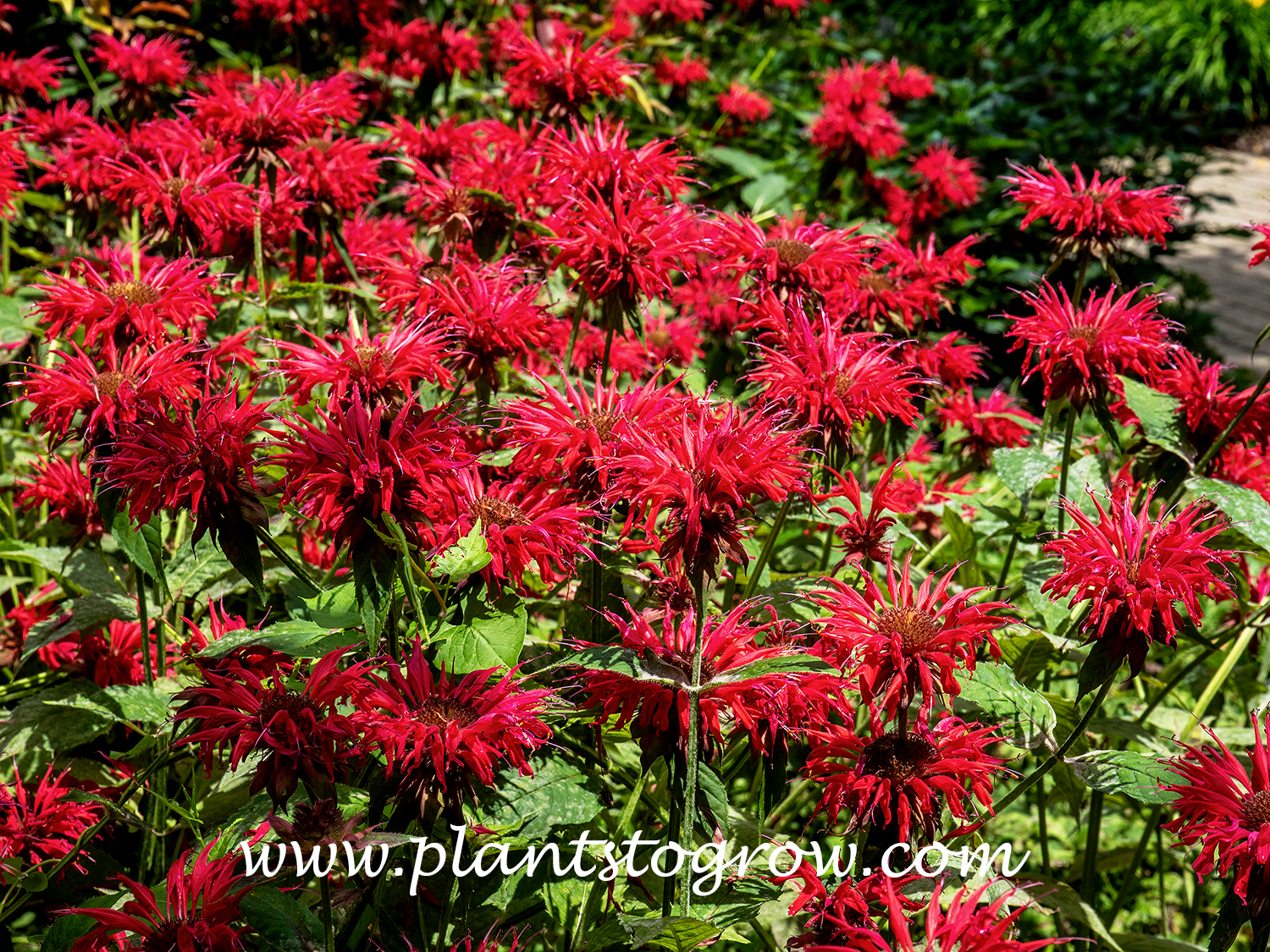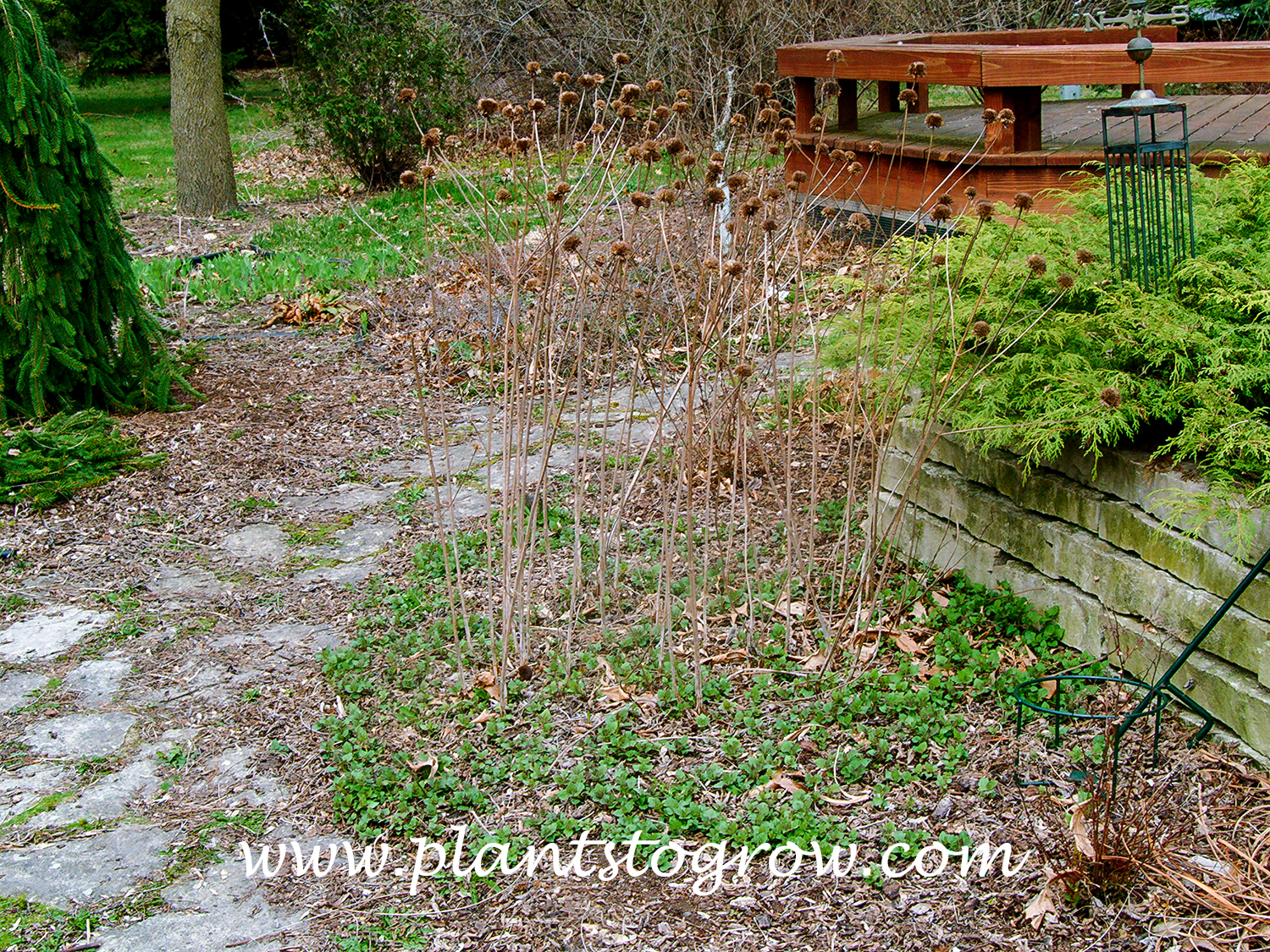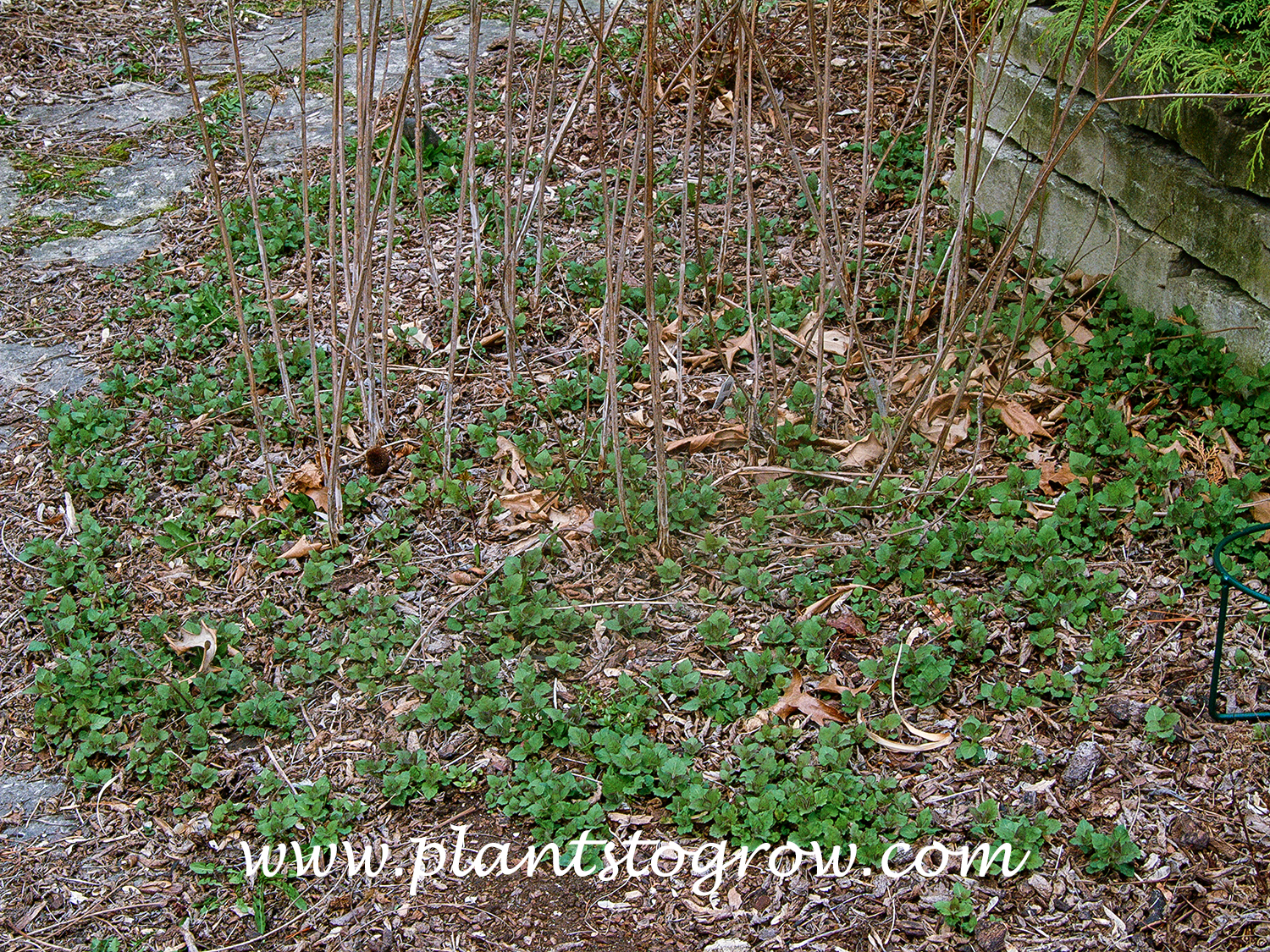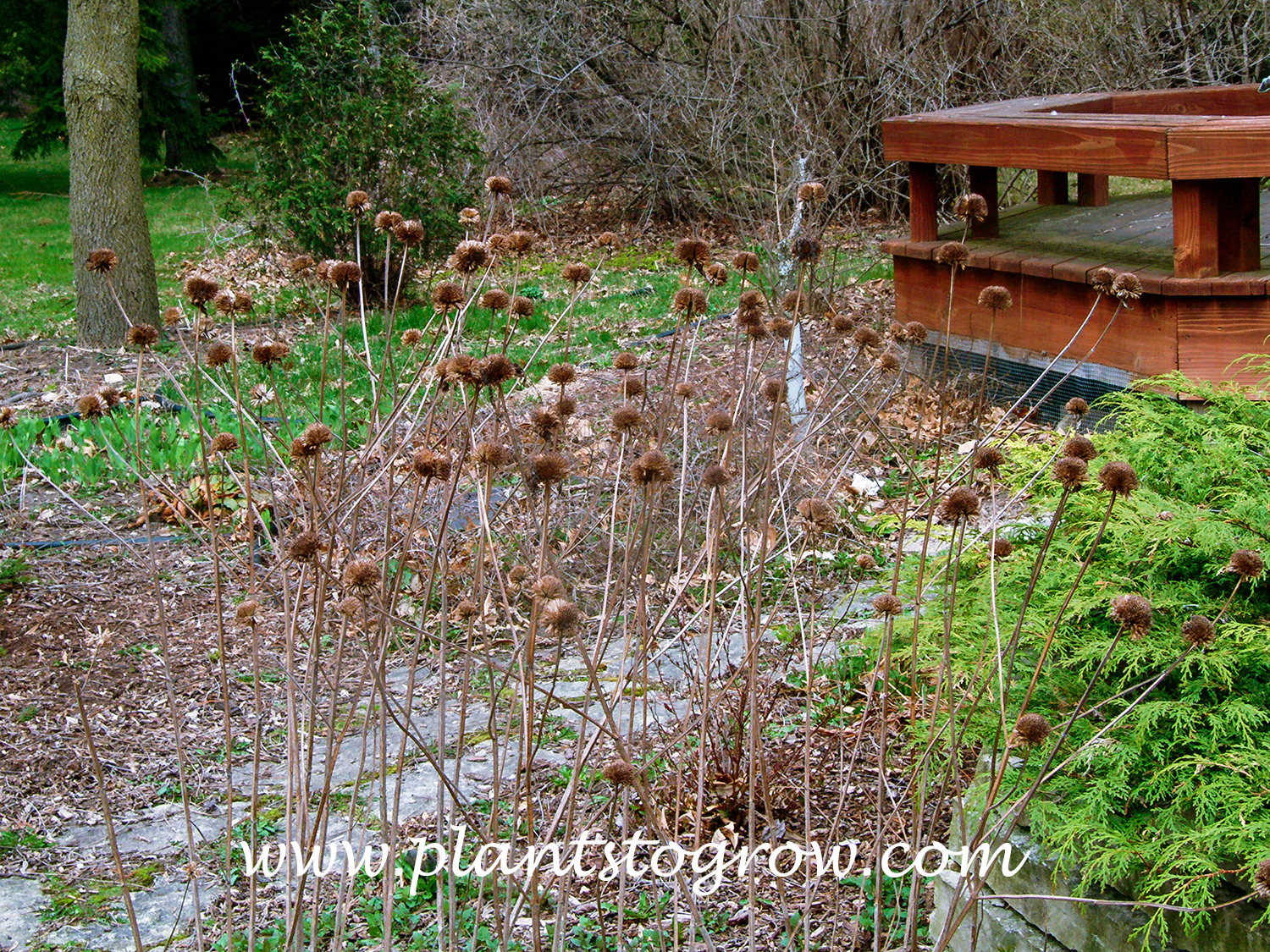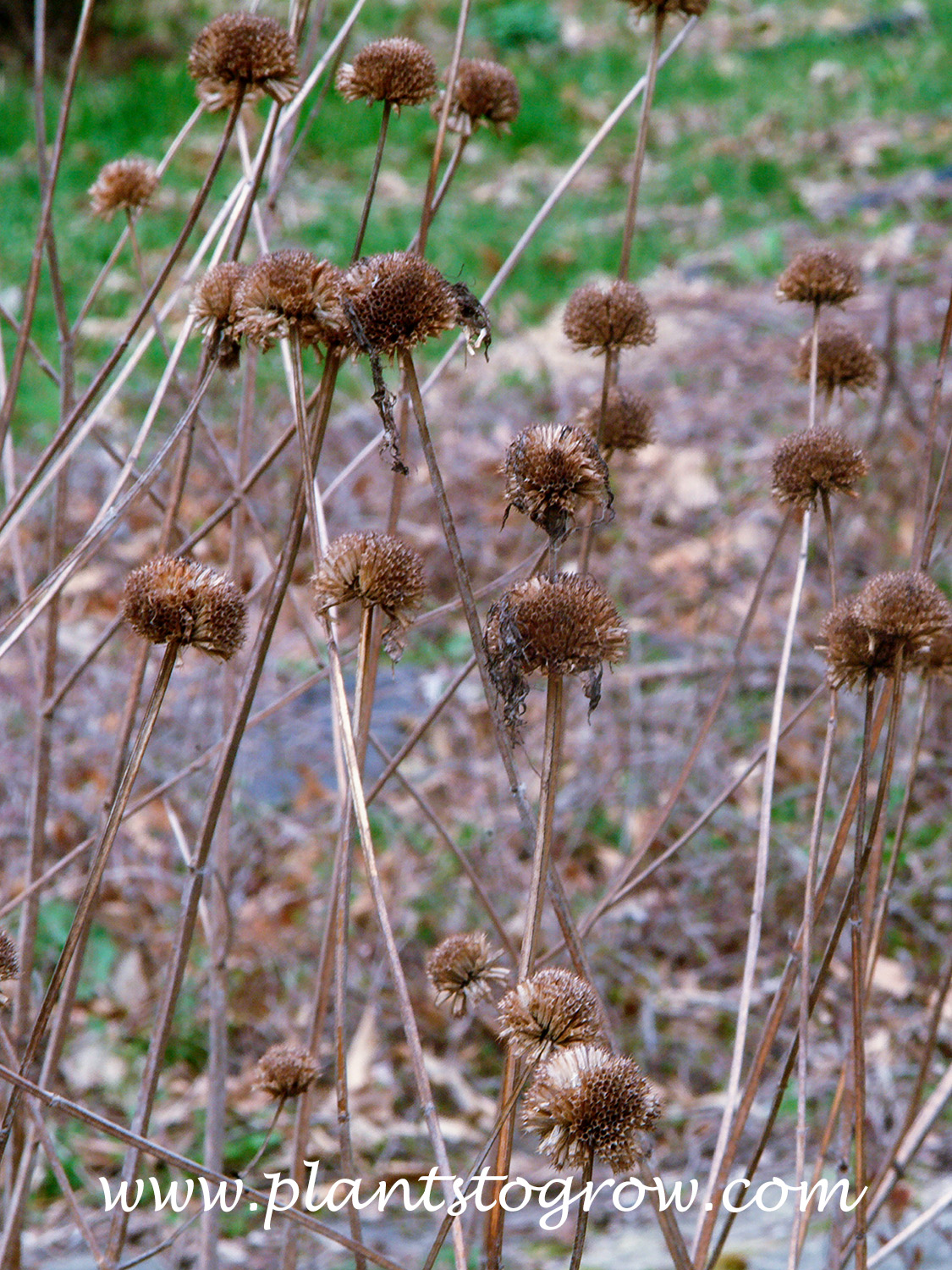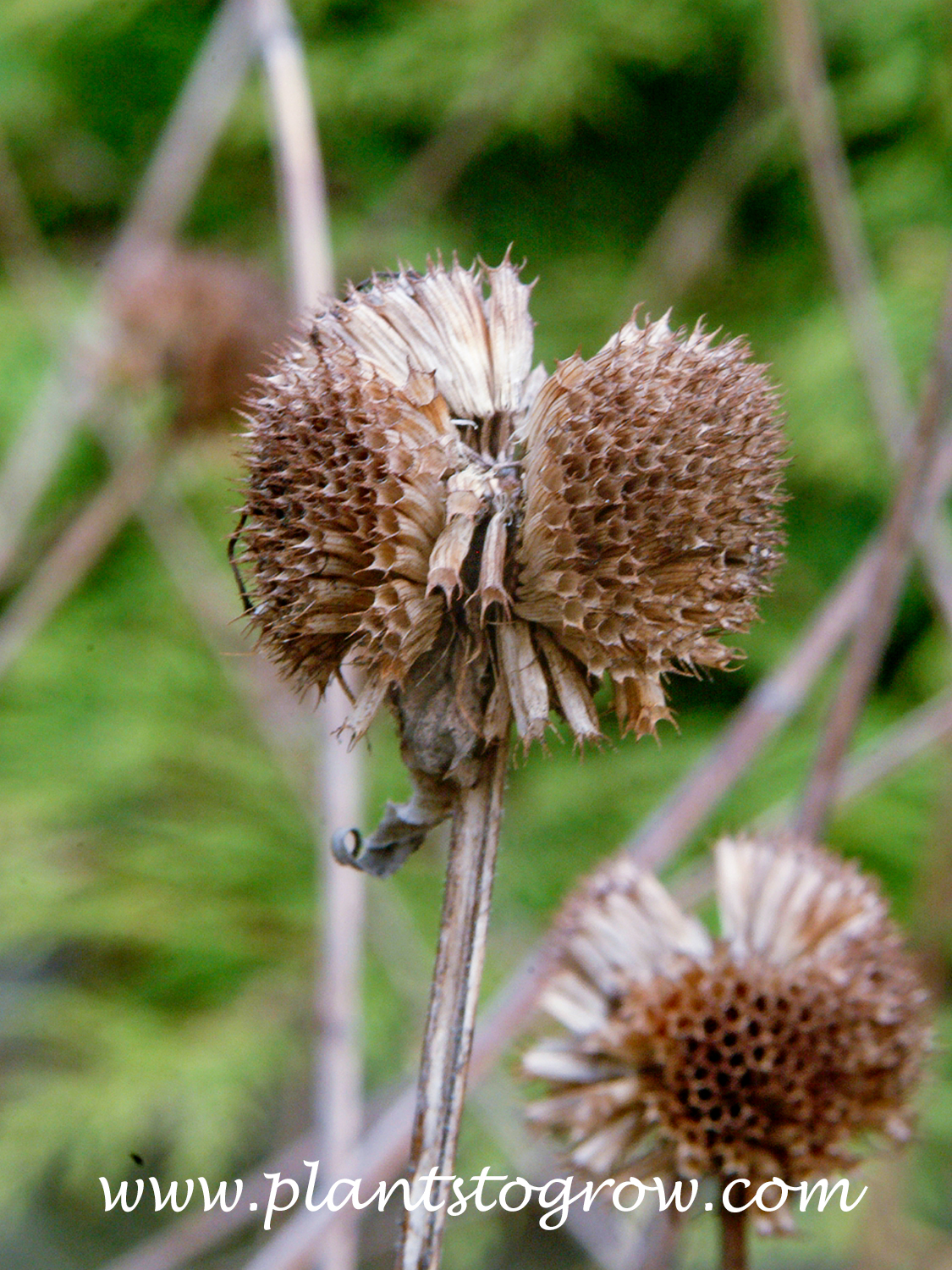| Description | Bee Balm (Monarda didyma) is a medium-tall, wide-spreading perennial for full-sun areas of the garden. It has a mildew problem, but this can be worked around by proper management of the plant and garden. |
|---|---|
| Pronunciation | (mon-NAR-da) |
| Plant Type | Perennials Hardy, Site author's observations |
| Hardiness Zone | 4-9 |
| Sunlight | full |
| Moisture | Grows best in average conditions. In most rich soil, sites will expand rapidly. |
| Soil & Site | average, avoid moist and rich sites |
| Flowers | Tubular flowers in a single or double row are whorled around the center dome. Colors: white, rose, red, pink, purple, etc. The colors appear in mid-July and last through August. Flowers attract bees, Hummingbirds, and other pollinators. |
| Leaves | Ovate to ovate-lanceolate, medium to deep green leaves (3-6” long) with serrate margins. Leaves emit a minty fragrance when bruised or crushed. The leaves are used to make tea. |
| Stems | The upright stems are four-angled. Spreads by aggressive rhizomes. |
| Roots | fibrous |
| Dimensions | They reach 3-4 feet tall and will spread as far as you let them. New shorter cultivars are becoming available. |
| Maintenance | After the flowers have bloomed, cut the Monarda plant back to the ground. This helps remove the bare stems and leaves that may have mildew. Monarda tends to die out in the center, so it should be divided every 2-3 years. You can either dig up healthy clumps and replant them or remove the center and fill the space with compost. The plants will grow back quickly. It's a good idea to position Monarda behind another plant to cover the space left after cutting it back. While all Monarda plants are susceptible to mildew, newer cultivars are said to be mildew-resistant, although it is unlikely that any are completely immune. |
| Propagation | Monarda can be grown from seed, but cultivars will not produce true-to-type offspring from seed. Monarda can be easily reproduced by division and also through softwood cuttings. |
| Native Site | Canada, United States |
| Cultivar Origin | Most of the newer cultivars can be traced back to the native Monarda didyma. |
| Misc Facts | This plant is known as Oswego Tea because it was discovered by John Bartram near Oswego, New York (pre-1777), who used its leaves to make tea. The genus is named after Nicolas Monardes, a 16th-century botanist. The common name "bee balm" refers to the plant's historical use of its resins to soothe bee stings. Meanwhile, the name "Oswego tea" acknowledges its traditional use by the Oswego Indians of New York State for making tea. The toothed, aromatic leaves, which are 3 to 5 inches long, are still utilized today for teas and salads. Additionally, the common name "wild bergamot" comes from the supposed similarity in aroma between the plant's flowers and that of the bergamot orange. |
| Author's Notes | Monarda is an excellent hardy plant for the perennial garden; if a few maintenance rules and selection of newer cultivars are followed, they can be long-lasting plants, |
| Notes & Reference | #04-Herbaceous Perennial Plants (Allan Armitage), #40-Herbaceous Ornamental Plants (Steven Stills), #144-Missouri Botanical Gardens web site (www.missouribotanicalgarden.org), #274-Site Authors' observations and growing experiences of different Monarda cultivars |

Cart
